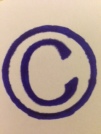A lawsuit over the FREE USE of the Sherlock Holmes characters and story elements prompted the US District Court in the Northern District of Illinois to do some detective work into the famous, fictional detective to determine whether Holmes, other characters and story elements of Sir Arthur Conan Doyle’s books and stories had entered into the public domain.
to do some detective work into the famous, fictional detective to determine whether Holmes, other characters and story elements of Sir Arthur Conan Doyle’s books and stories had entered into the public domain.
The lawsuit, Klinger v. Conan Doyle Estate, raises two interesting copyright questions: 1) what are the copyrightable elements of a literary work; and 2) when do copyrightable elements of a literary work enter the public domain and become available for free public use.
As a bit of background info, Sir Arthur Conan Doyle authored four novels and 56 short stories featuring Sherlock Holmes and Dr. Watson and published these in the US over a span of 30 years (from 1890 – 1926). As one might expect, new characters and plot elements were introduced in the novels and short stories over time. Hint: these details are critical to the court’s analysis of the copyright questions raised in the case.
QUESTION 1: Copyrightable Elements of a Literary Work. The court held that copyright protection extends to characters, character traits, and storyline because these are copyrightable “increments of expression.” By contrast, the court reiterated a general tenant of US copyright law that “ideas, plots, dramatic situations and events” are not elements in a literary work that are protected by copyright.
QUESTION 2: When Do Copyrightable Elements of Sir Author Conan Doyle’s Literary Works Enter the Public Domain and Become Available For Free Public Use? The short answer is that his works published prior to 1923 are in the public domain. Since Sir Author Conan Doyle published works featuring Sherlock Holmes and Dr. Watson both before and after 1923, the court analyzed the publication dates of the works and the introduction of various copyrightable “increments of expression” (including characters, character traits and storyline) to determine which were published pre-1923 and post-1923. Those published pre-1923 are in the public domain and those published post-1923 are still protected by copyright.
Interestingly, some of the post-1923 characters, character traits and storylines that were at issue in the lawsuit and held by the court to be still protected by copyright are: 1) Dr. Watson’s second wife (introduced in 1924); 2) Dr Watson’s background as an athlete (introduced in 1924); 3) and Sherlock Holmes’ retirement from his detective agency (introduced in 1926).
Only 10 of Sir Author Conan Doyle’s works featuring Sherlock Holmes and Dr. Watson were published in the US post-1923 and are still covered by copyright protection. The 50 earlier works are in the public domain, which means that “increments of expression” including characters, character traits and storyline (most notably Sherlock Holmes and Dr. Watson) are available for the public to use for free without a license.
BY: Vanessa Kaster, Esq., LL.M.
This summary is based on the Memorandum Opinion and Order issued by the United States District Court for the Northern District of Illinois in a ruling on the plaintiff, Klinger’s, motion for summary judgment against the Conan Doyle Estate. See also: earlier blog posts on the topic of “public domain,” https://iplegalfreebies.wordpress.com/category/public-domain/; other copyright and public domain resources, http://www.copyright.gov, http://copyright.cornell.edu/resources/publicdomain.cfm, http://creativecommons.org/publicdomain/; @iplegalfreebies and www.kasterlegal.com.





